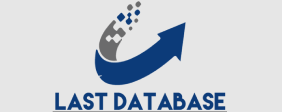Maps are very useful. For example, a treasure map tells you how to get rich. The topographical maps are also very cool and the feeling of touching them is interesting. The world map always reminds us that cats rule.
But maybe you don’t have much fun with sitemaps. To be honest, they are not easy to understand and last time I checked, they are not very attractive. But if you use them correctly, they can be a way to a higher rank and more traffic for your site.
So in this article, I want to tell you what a sitemap is, why you might need a sitemap, and how you can create a sitemap and send it to Google.
What is a sitemap?
Sitemap is a simple file that lists the addresses of all the important pages of your site. Its main purpose is to help search engines understand your site better and find specific pages more easily. Of course, we also have site maps that help users navigate the site, which we will discuss further.
Below you can see an example of the sitemap. It may seem complicated at first glance, but until the end of this article, it becomes simple and understandable
To understand why sitemaps are important in SEO, you must first know how search engines work. In particular, you should be familiar with the terms “crawl” and “index”.
What is crawling?
Crawling is what Google bots, or database shop spiders, do. Imagine how many little robots are roaming the internet and checking all web pages. These robots act like small Google search engines and collect information on every page they reach. This process helps them understand how the pages are connected and what the content of each page is. Therefore, crawling means Google bots visit sites, examine pages and store information.
What is an index?
Indexing is the next step after crawling. When Google bots find and review pages, they store the collected information in a large database. This database is the same as Google’s index. You can imagine that Google has a big library and every web page is stored in this library like a book. So, when you search for something in Google, Google searches this library and finds the fastest and best results for you.
Now knowing these two concepts, you can better understand why sitemaps are important. Sitemaps help Google robots to find and index all the pages of your site more easily and quickly.
Advantages of sitemap
When Google understands your site better and can crawl it more easily, you will get a better rank for your target keywords and more traffic will be directed to your site. With these explanations, let’s take a closer look at the benefits of having a sitemap:
Faster indexing of pages
Google cannot crawl the entire internet every day. Instead, it has different crawl programs for different sites and content. Sometimes it may take days, weeks or even months for Google to find the new pages of your site. Sitemaps help Google find and index new pages faster.
Maintain good performance of valuable pages
Have you ever updated how to find keyword research with chatgpt a page on your site – for example, to update your important and lasting content – but the changes did not show up in the search results? This is because Google is not aware of the last update of your page. With more optimized crawling and indexing, you can be sure that users are seeing the most up-to-date version of your valuable or frequently changed pages.
Help find orphaned pages
Google bots usually find site awb directory pages the same way visitors do – by following links to crawling pages. Orphan pages are pages that no internal links refer to and are harder for Google to find. But with these pages in the sitemap, Google can find and index them more easily.
Helping Google to detect duplicate pages
In some cases, business sites have duplicate or near-duplicate pages – for example, a store site might have duplicate product pages with different colors. In this situation, Google may not know which version of the page is the original version that you want to rank. Using the sitemap, you can use canonical tags to show Google which is the original version and which are duplicates.
Google supports HTML sitemaps because these types of sitemaps help it understand which pages of your site are most important. In other words, when the pages are linked hierarchically and regularly, Google can prioritize and index the important pages better.


